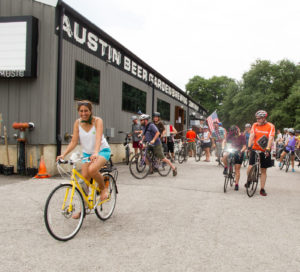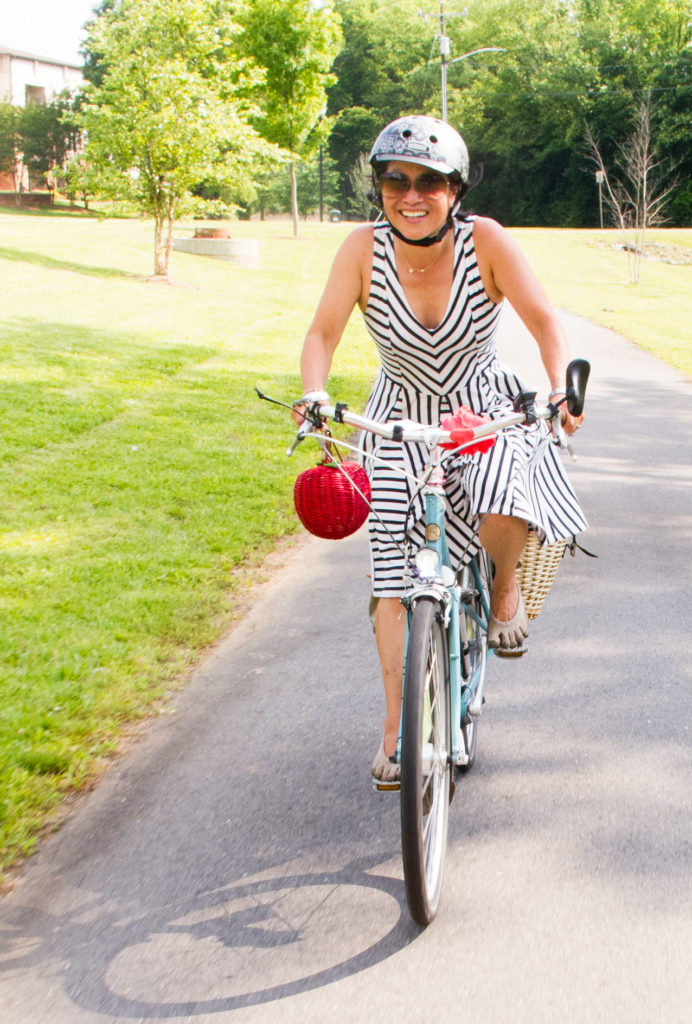
At the Spring Fling ride I got to have a couple of good conversations with Mercedes Feris and other folks from Bike Austin. My impression is that their strategy is to normalize cycling. For many years in the U.S., biking was an exceptional activity, which required specialized equipment, special clothing, safety gear, and usually a car to drive to the place where the activity would commence. Like snowboarding or golfing, cycling was generally not viewed as something that could be integrated with daily life.
Leading a group ride on a city bike, in street clothes, and without a helmet is more than a collection of personal choices: it’s a statement about a different way to conceptualize cycling in the city. You’re a lot more likely to ride from the brew pub to the café if it’s OK to jump on any old bike in the clothes you happen to be wearing. Bike Austin’s vision statement includes the idea that, “cycling [should be] a common aspect of daily life for everyone.”
Until recently, Bike Austin was named the League of Bicycle Voters. The organization was founded to fight (successfully) an all-ages mandatory helmet law which was put on the books in Austin in 1996 (changed to be limited to children under 18 in 1997). And now I’ll see if anyone’s reading this blog, because there are few things more sure to start a comment-section flame war than a picture of a helmet-less rider.
My take on the helmet issue is this: Utility cyclists in other countries do not regularly wear helmets. We do not see massive carnage on the roads of Italy or Denmark or Japan because utility cycling, by any reasonable measure, is a relatively low-risk activity. My personal opinion is that reinforcing the idea that cycling is a low-risk activity is the most important thing a cycling advocacy group in the U.S. can do. Many advocacy organizations use fearful language to promote their agendas, and I think that approach is counter-productive.
Bike Austin also has some language in their vision about diversity and social equity; more on that later.


